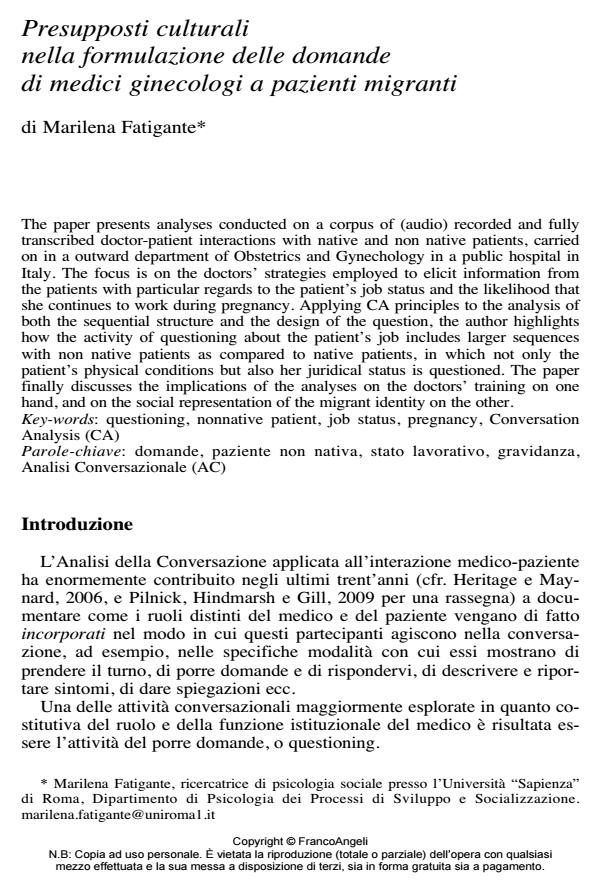Presupposti culturali nella formulazione delle domande di medici ginecologi a pazienti migranti
Journal title SALUTE E SOCIETÀ
Author/s Marilena Fatigante
Publishing Year 2013 Issue 2013/1
Language Italian Pages 17 P. 44-60 File size 123 KB
DOI 10.3280/SES2013-001005
DOI is like a bar code for intellectual property: to have more infomation
click here
Below, you can see the article first page
If you want to buy this article in PDF format, you can do it, following the instructions to buy download credits

FrancoAngeli is member of Publishers International Linking Association, Inc (PILA), a not-for-profit association which run the CrossRef service enabling links to and from online scholarly content.
The paper presents analyses conducted on a corpus of (audio) recorded and fully transcribed doctor-patient interactions with native and non native patients, carried on in a outward department of Obstetrics and Gynechology in a public hospital in Italy. The focus is on the doctors’ strategies employed to elicit information from the patients with particular regards to the patient’s job status and the likelihood that she continues to work during pregnancy. Applying CA principles to the analysis of both the sequential structure and the design of the question, the author highlights how the activity of questioning about the patient’s job includes larger sequences with non native patients as compared to native patients, in which not only the patient’s physical conditions but also her juridical status is questioned. The paper finally discusses the implications of the analyses on the doctors’ training on one hand, and on the social representation of the migrant identity on the other.
Keywords: Questioning, nonnative patient, job status, pregnancy, Conversation Analysis (CA)
- Interculturality in Institutions Carlo Orefice, Alessandra Romano, pp.41 (ISBN:978-3-031-12625-3)
- Interculturality in Institutions Marilena Fatigante, Cristina Zucchermaglio, Francesca Alby, pp.161 (ISBN:978-3-031-12625-3)
Marilena Fatigante, Presupposti culturali nella formulazione delle domande di medici ginecologi a pazienti migranti in "SALUTE E SOCIETÀ" 1/2013, pp 44-60, DOI: 10.3280/SES2013-001005